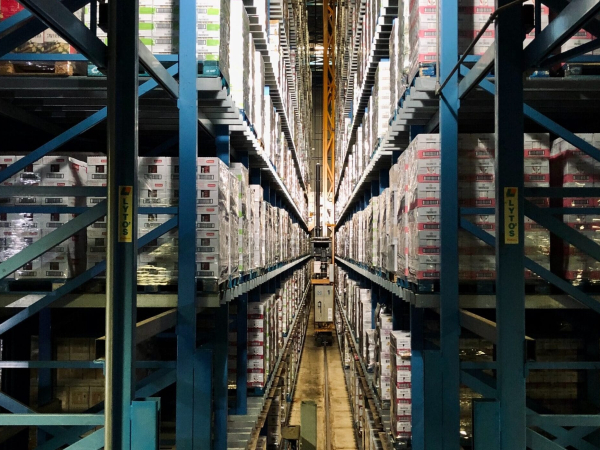Supply Chain
Navigating trade policy shifts: How manufacturers and CPG companies can adapt
The global trade landscape is shifting rapidly, driven by recent U.S. tariff policies. Below are key considerations and…
Read article

09/03/2025
by Liya Getachew

As seen on Supply Chain 24/7, originally published in July 2025.
With industrial M&A activity expected to rise by 20–25% in 2025, supply chain and logistics leaders are bracing for a surge in complex integrations that demand preparation. While mergers and acquisitions (M&A) offer significant growth potential, they also present substantial post-merger integration challenges for supply chain operations. Unlocking the full value of these acquisitions hinges on proactively identifying and navigating common pitfalls related to digital infrastructure, operational harmony, and strategic alignment, ensuring seamless transitions and sustained resilience.
One of the most pervasive and disruptive challenges in mergers and acquisitions (M&A) is the presence of fragmented systems and data silos. Merging companies frequently inherit disparate IT systems (e.g., ERPs, TMS, WMS, inventory platforms) that operate in isolation, limiting real-time visibility and creating operational blind spots. Even when data is captured, it often remains siloed or underutilized, preventing advanced analytics crucial for holistic insights. This fragmentation blocks opportunities to optimize the structure and operation of the supply chain across networks, ultimately impairing forecasting accuracy, risk management, strategic decision-making, and the overall competitive advantage.
To avoid this, prioritize end-to-end digital integration with a clear, phased roadmap that ensures seamless integration. This involves consolidating or integrating key supply chain systems and establishing a single source for all operational data. Concurrently, invest in a robust, unified data platform that supports advanced analytics, enabling predictive insights, optimal routing decisions, and real-time risk assessment across the entire expanded supply chain.
A second common pitfall is failing to prioritize comprehensive integration, which can leave the newly combined supply chain vulnerable and prone to fragility. This oversight leads to an increased risk of operational inefficiencies, inventory imbalances, shipping delays, and a diminished ability to respond swiftly to market changes or unforeseen events, resulting in significant value erosion.
To address this, focus on harmonizing core supply chain operations, processes and technology. This involves unifying diverse logistics, warehousing and transportation management systems to create cohesive operational flows with built-in predictive and adaptive capabilities to significantly enhance overall network resilience.
M&A integrations often reveal inconsistent vendor management processes, duplicate suppliers, and fragmented procurement systems. Without alignment, organizations miss opportunities to consolidate vendors, standardize terms, and maximize purchasing power. Inconsistent processes and fragmented communication can lead to operational inefficiencies, while varied contract terms and compliance gaps can increase overall business risk and complicate integration efforts.
To avoid this misstep, conduct a thorough vendor and contract audit early in the integration process. This will help identify overlaps and renegotiation opportunities, enabling the establishment of a unified vendor management framework with consistent policies, performance metrics and centralized contract tracking.
Another common pitfall is sticking with outdated legacy systems and reactive operational models. Mergers should ideally serve as a catalyst for modernization, but often entities simply “bolt-on” outdated legacy systems or maintain reactive operational models from the acquired entity. This general inertia prevents the combined organization from building a truly agile and responsive supply chain, perpetuating inefficiencies and hindering its ability to adapt quickly to evolving consumer demands or market shifts.
To address this, approach M&A as a strategic opportunity to build an agile, future-proof digital supply chain infrastructure. This includes strategically embracing cloud solutions, automation, and AI across the entire network, as well as designing a new supply chain technology stack that is inherently scalable, flexible, and adaptable to future challenges.
One of the most significant pitfalls in M&A supply chain integration is the absence of clear leadership and strategic planning. Without strong executive buy-in, defined roles, and a meticulously planned integration roadmap, teams often experience confusion, resistance, and prolonged integration timelines. Change fatigue sets in quickly when teams don’t see a clear vision or feel excluded from the integration journey and often face resistance to change. This slows progress and undermines the merger’s success, often leading to frustration, duplicated efforts and missed deal value.
To ensure successful integration, secure strong executive buy-in, communicate it clearly, and develop a detailed, cross-functional roadmap with defined roles, timelines, and success metrics. Empowering mid-level leaders to lead change helps connect strategy to execution across all supply chain functions.
Proactive and strategic digital alignment is not merely an IT initiative or the responsibility of one function. It’s a critical enterprise-wide priority for unlocking the full value of deals and driving long-term success in supply chain M&A. By proactively identifying and diligently addressing these common post-merger pitfalls, supply chain and logistics leaders can ensure their newly integrated operations are not only efficient and resilient but also poised for future growth and competitive advantage.
Business insights
Supply Chain
The global trade landscape is shifting rapidly, driven by recent U.S. tariff policies. Below are key considerations and…
Read article

Supply Chain
Reducing the risk of supply chain disruptions caused by COVID-19, geopolitical challenges, and supply chain issues have…
Read article

Supply Chain
Supply chain resilience boils down to a simple concept: How effectively does your supply chain weather any type of…
Read article
